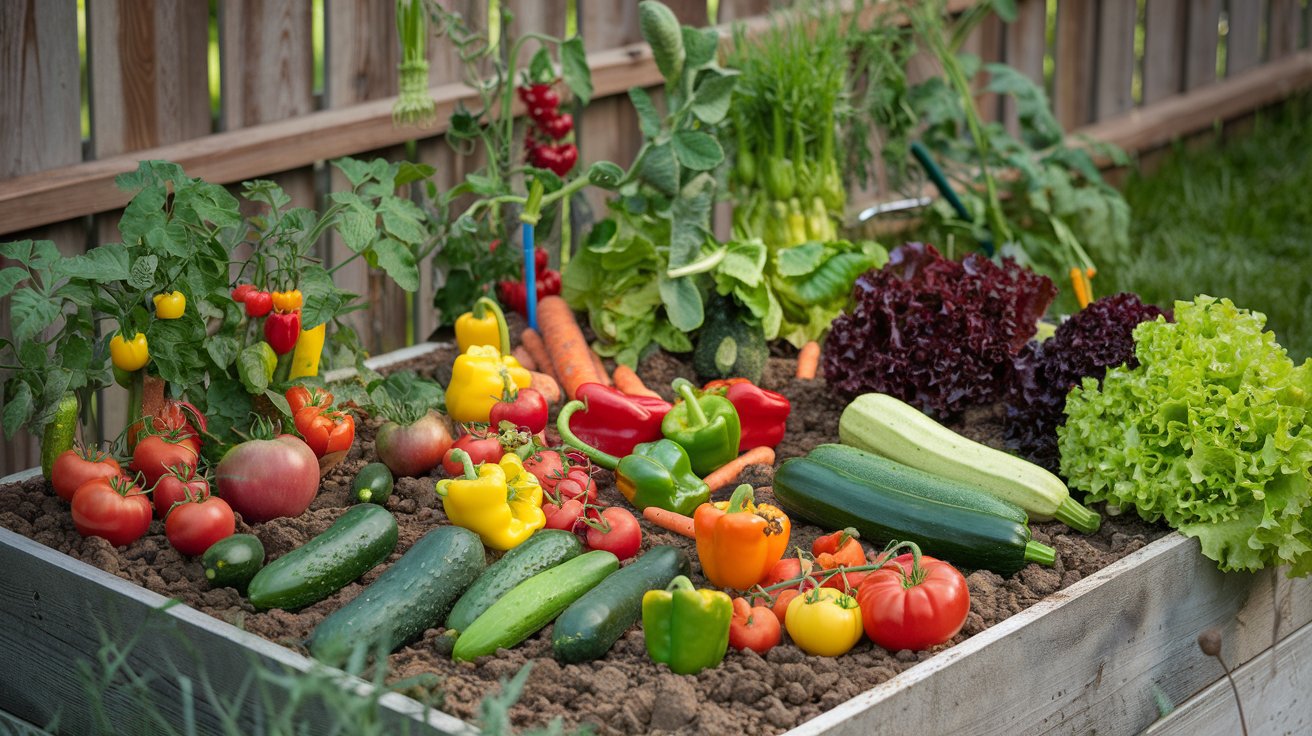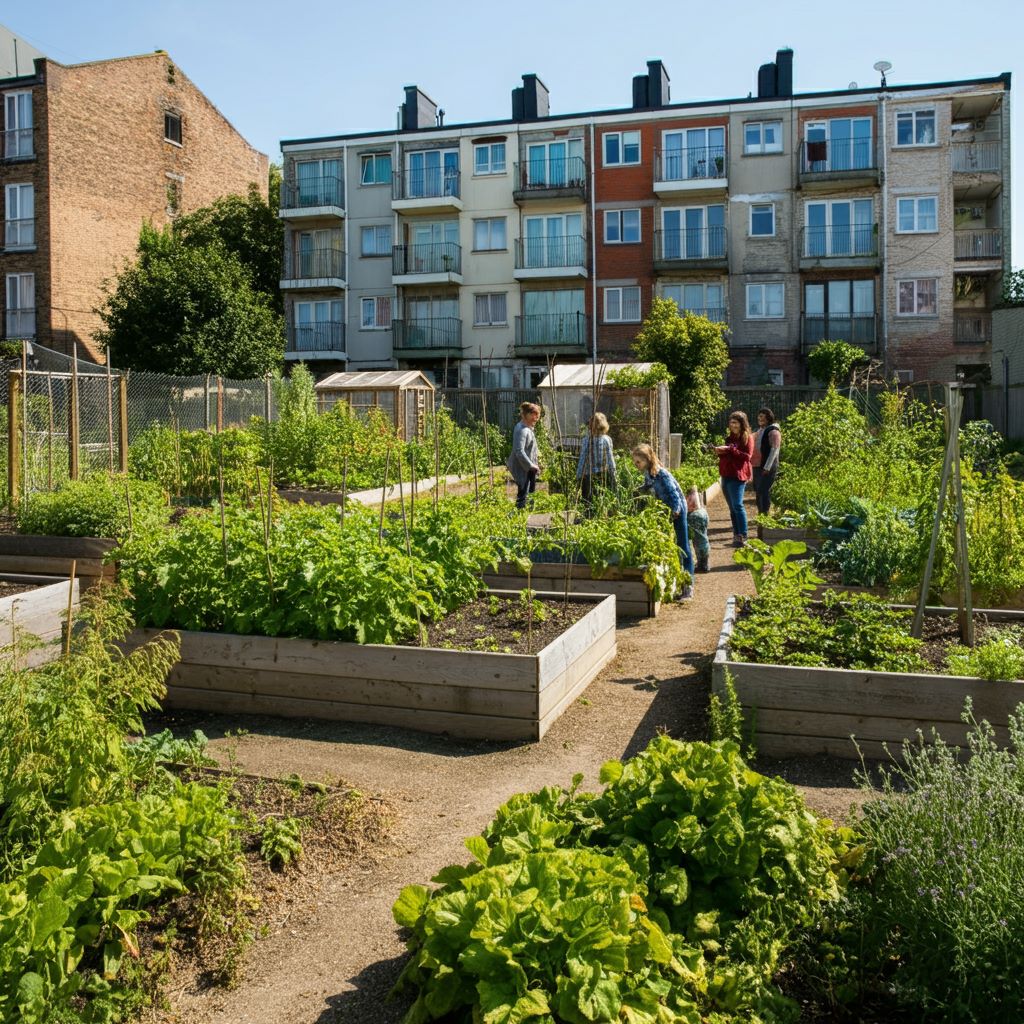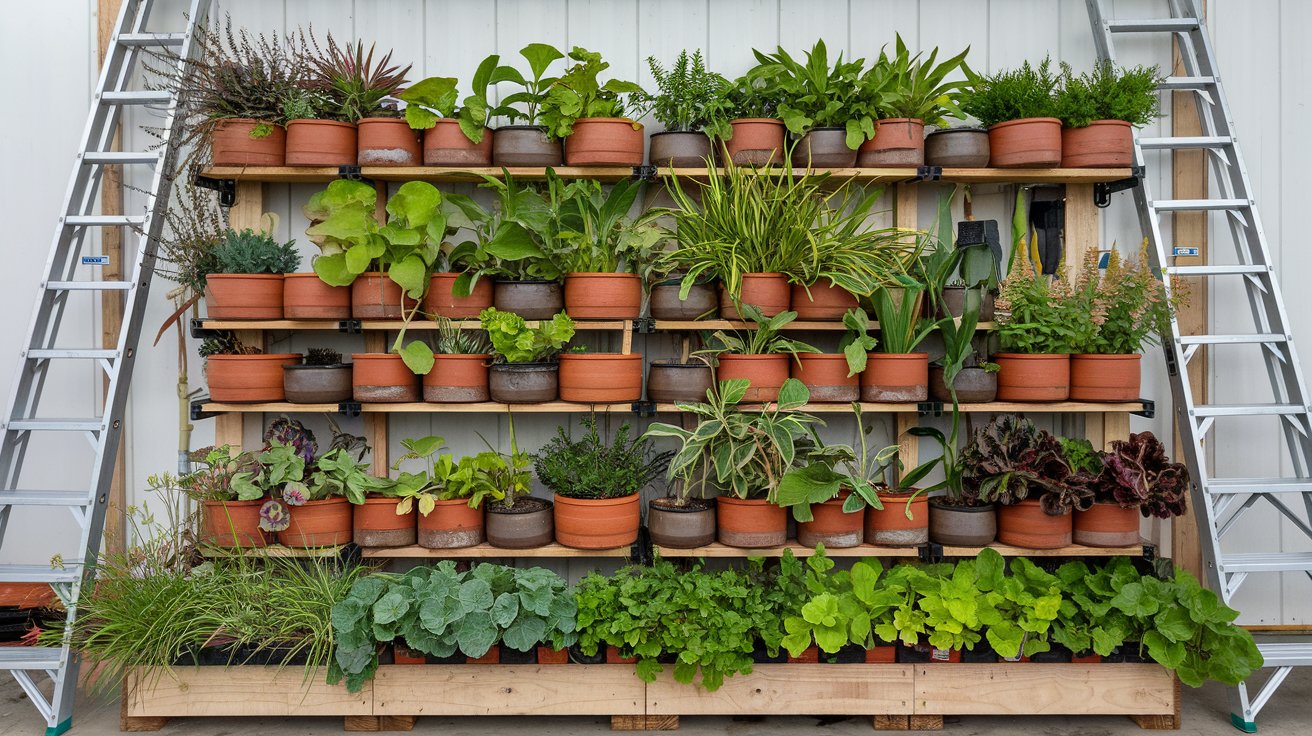For beginners, growing easy vegetables in the garden can seem like a daunting task, but it doesn’t have to be! With a little patience and guidance, anyone can enjoy fresh, homegrown produce. One of the biggest perks of growing vegetables in your garden is the satisfaction of watching your plants grow and knowing exactly where your food comes from. Plus, it’s a rewarding way to save money, boost your health, and contribute positively to the environment.
Getting started with vegetable gardening doesn’t require much more than basic knowledge, a little time, and some enthusiasm. This article highlights 5 of the easiest vegetables to grow in your garden, perfect for beginners looking to dip their toes into the world of gardening.
Key Takeaways
- The best beginner-friendly vegetables are fast-growing and easy to maintain.
- Understanding your soil, sunlight, and water needs will help ensure success.
- Growing vegetables in containers, raised beds, or small spaces is totally doable.
- Regular care, such as watering and pest control, will keep your garden healthy.
- Start with vegetables like lettuce, tomatoes, and carrots to guarantee a successful gardening experience.
Table of Contents
The Best Easy Vegetables for Beginners in the Garden
Choosing the right vegetables to grow in your garden is crucial for ensuring that you have a successful gardening experience. As a beginner, it’s best to choose vegetables that are both easy to grow and require minimal care. Look for vegetables that grow quickly, are relatively resistant to pests, and don’t need constant attention.
Here are some of the best vegetables for beginners:
- Lettuce: Grows fast, requires little maintenance, and can be harvested multiple times.
- Carrots: Easy to plant and very rewarding to harvest, especially when growing them for the first time.
- Tomatoes: Require a bit more attention but are incredibly satisfying to grow.
- Zucchini: A prolific plant that yields a large number of vegetables with minimal care.
- Radishes: Perfect for impatient gardeners, as they grow quickly and are ready in just a few weeks.
- Spinach: Ideal for beginners due to its quick growth and high nutritional value.
- Green Beans: Easy to grow and care for, and they yield a high number of beans.
- Peas: Great for small spaces and grow quickly.
- Cucumbers: Can be grown vertically, saving space, and are rewarding to harvest.
- Potatoes: A beginner’s dream, they are relatively low-maintenance once planted and yield large crops.
1. Growing Carrots: A Beginner’s Guide
Carrots are a perfect vegetable to start with because they require very little attention and thrive in most gardens. Carrots also don’t need a lot of space, making them ideal for smaller gardens or even container gardening.
Why Carrots Are Great for Beginners
- Adaptable: Carrots grow well in a variety of soil types but prefer loose, well-drained soil to allow their long roots to develop.
- Minimal Maintenance: Once planted, carrots don’t need much care apart from occasional thinning to ensure proper spacing and consistent moisture.
- Satisfaction: There’s something incredibly rewarding about harvesting a perfectly straight, vibrant carrot from your garden.
Steps to Grow Carrots
- Prepare the Soil: Carrots need loose soil without large rocks or heavy clay. Add compost to improve soil structure.
- Sow Seeds: Plant carrot seeds about 1/4 inch deep and space them about 2 inches apart.
- Water Regularly: Keep the soil moist but not waterlogged. Consistent moisture helps the roots grow properly.
- Thinning: Once seedlings appear, thin them to ensure the roots have enough space to grow without competition.
- Harvesting: Carrots are ready to harvest when the tops are about 1/2 inch thick. Gently pull them from the soil and enjoy fresh, homegrown carrots!
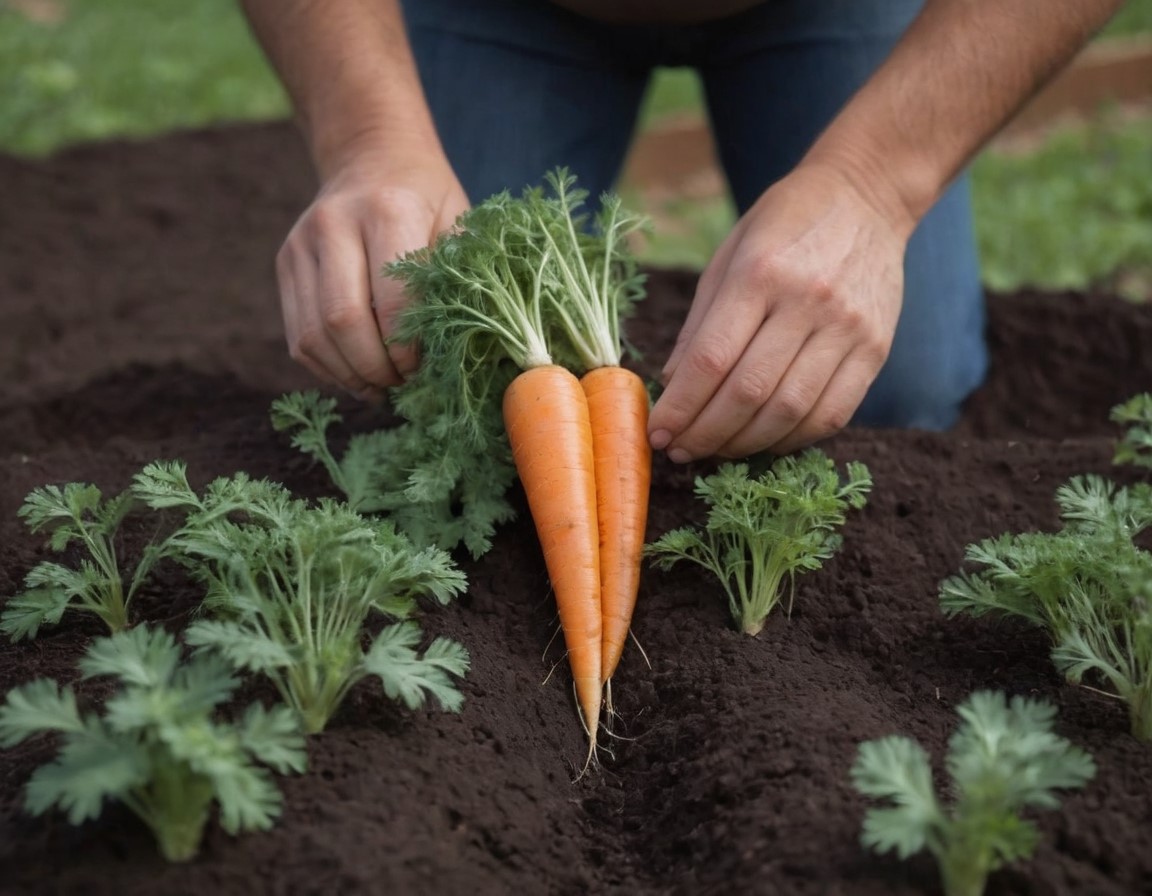
2. Growing Lettuce: Easy and Fast Harvest
Lettuce is an incredibly fast-growing plant, and it’s one of the most rewarding vegetables to grow in the garden. Not only does it mature quickly, but you can harvest leaves continuously throughout the growing season. Growing lettuce is ideal for beginners looking to create a garden with minimal effort and maximum yield.
Why Lettuce is Perfect for Beginners
- Quick Growth: Most lettuce varieties can be harvested in just 30-45 days, meaning you don’t have to wait long for your first harvest.
- Low Maintenance: Lettuce requires minimal care, though it does best in cooler weather. It doesn’t need heavy feeding or constant pest control.
- Versatility: Lettuce can be grown in small spaces, such as containers or window boxes, which makes it a perfect choice for gardeners with limited space.
Steps to Grow Lettuce
- Choose the Right Location: Lettuce prefers cooler temperatures, so plant it in early spring or fall.
- Planting: Sow seeds directly into the ground about 1/8 inch deep and 6 inches apart. Thin the seedlings if they become overcrowded.
- Watering: Lettuce likes moist soil, so water it regularly to keep the soil evenly damp.
- Harvesting: You can start harvesting when the leaves are large enough, and it will continue to produce new leaves if you pick only the outer ones.
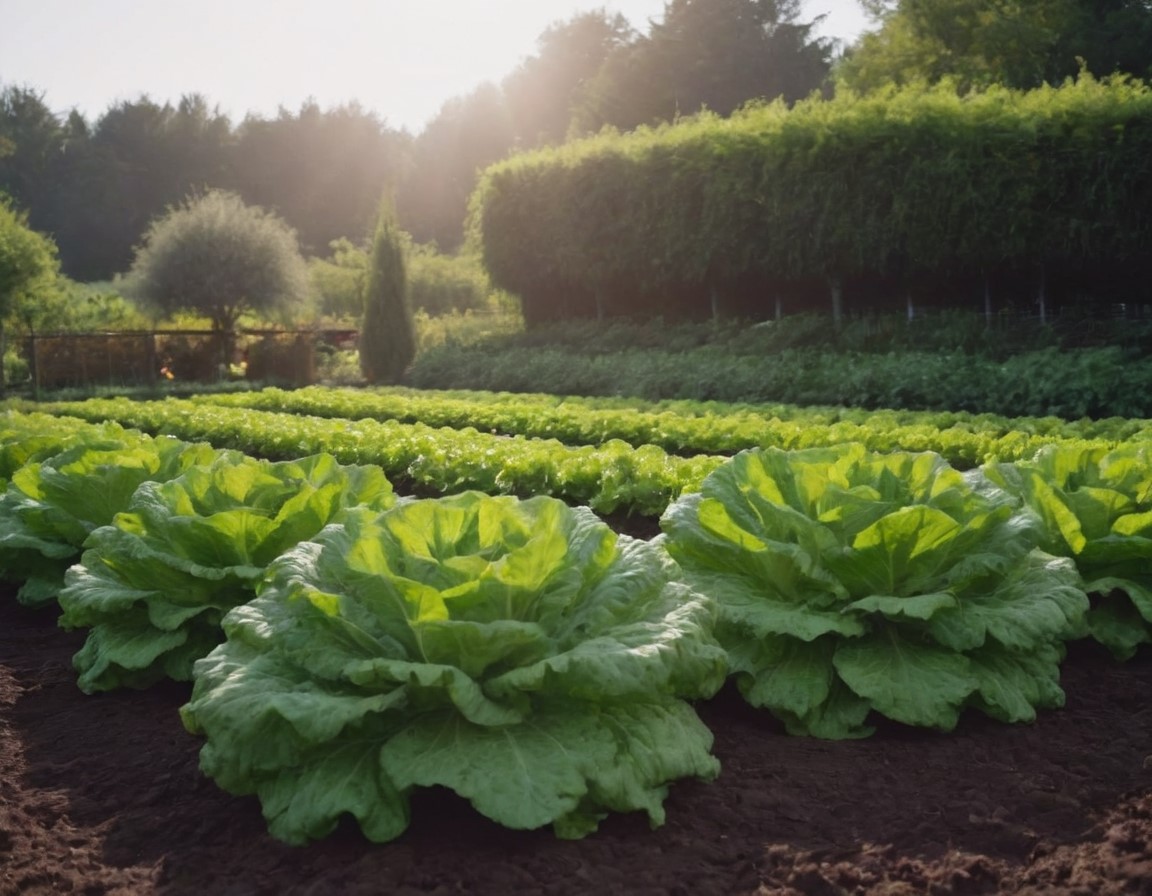
3. Tomatoes: A Must-Have Vegetable in the Garden
Tomatoes are often considered the star of the vegetable garden, and with good reason. They’re not only delicious and versatile but also relatively easy to grow, making them a great choice for beginners. While tomatoes do require a bit more attention than some other vegetables, their reward is well worth the effort.
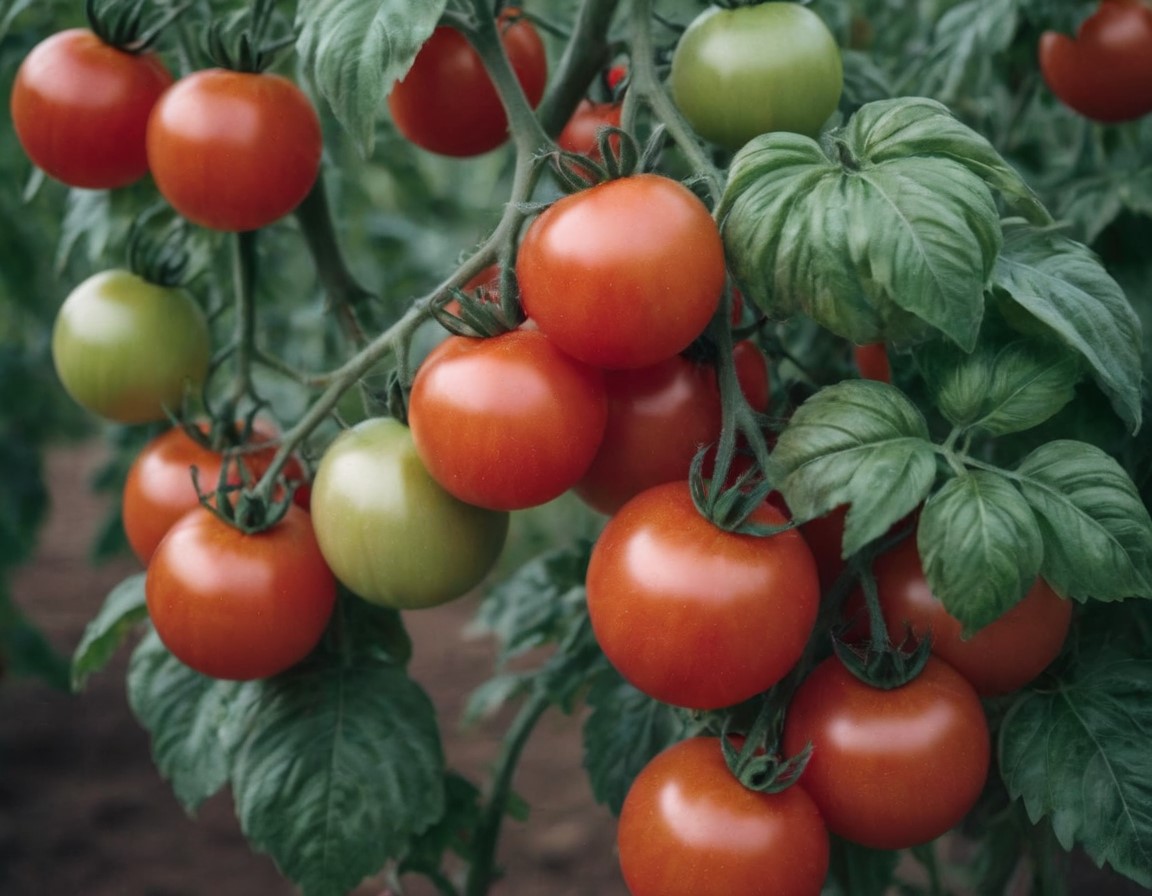
Why Tomatoes Are Great for Beginners
- Variety of Types: Whether you’re growing cherry, roma, or beefsteak tomatoes, there’s a tomato variety for every taste and garden size.
- High Yield: Once established, tomato plants can produce a bounty of fruit, ensuring a generous harvest.
- Satisfying to Grow: There’s nothing quite like the satisfaction of eating a tomato you’ve grown yourself, and they can be used in countless dishes.
Steps to Grow Tomatoes
- Choose the Right Variety: Some tomato varieties are better suited to beginners than others. Look for smaller, determinate varieties that require less space and care.
- Planting: Start tomatoes indoors in early spring, then transplant seedlings outdoors once the soil has warmed and the threat of frost has passed.
- Care and Support: Stake or cage your tomato plants to keep them upright as they grow. Water consistently but avoid wetting the leaves to reduce the risk of fungal diseases.
- Harvesting: Pick tomatoes when they’re fully ripe, indicated by their color and firmness.
4. Zucchini: The High Yield Vegetable for Beginners
Zucchini is a fantastic vegetable for new gardeners due to its impressive yield and ease of growth. This summer squash is a fast grower, producing large amounts of fruit from just a few plants. Even beginners can grow zucchini successfully, and it thrives with little care.
Why Zucchini is Perfect for Beginners
- Prolific Producer: Zucchini plants are known for producing an abundance of fruit, often requiring regular harvesting to prevent overgrowth.
- Low Maintenance: Zucchini plants are not fussy and can tolerate a variety of soil types and growing conditions.
- Space-Saving: Zucchini grows well in both traditional garden beds and container gardens, making it ideal for small spaces.
Steps to Grow Zucchini
- Planting: Start by planting zucchini in well-drained soil with full sun exposure. Space them 2-3 feet apart to allow the plants to spread.
- Watering: Zucchini plants need consistent moisture, especially during the fruiting stage. Water at the base of the plant to prevent mildew.
- Harvesting: Harvest zucchinis when they are about 6-8 inches long for the best flavor and texture.
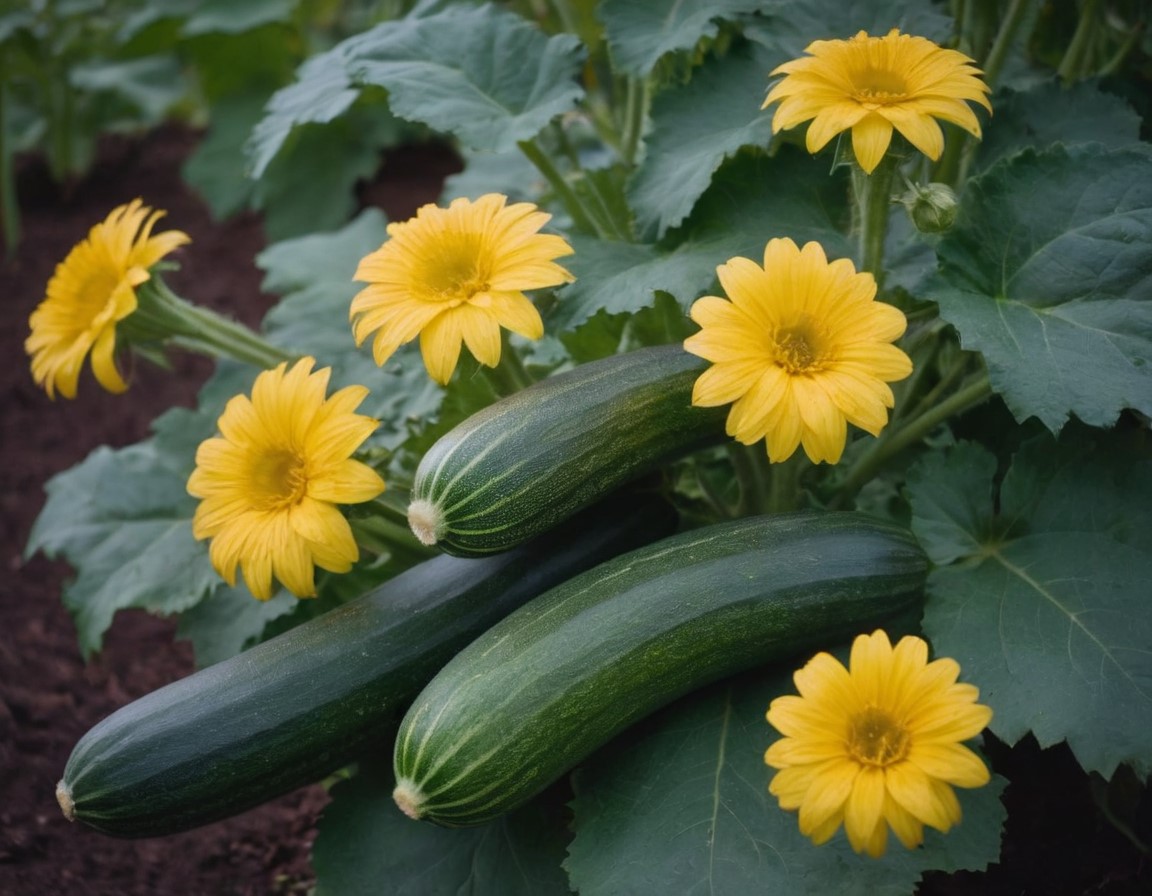
5. Radishes: Fast, Easy, and Fun to Grow
Radishes are one of the fastest-growing vegetables, often ready to harvest in as little as 3-4 weeks. They are perfect for beginners who want to see immediate results and are ideal for planting in cooler months. Radishes are low-maintenance and easy to care for, making them a perfect entry point for new gardeners.
Why Radishes Are Perfect for Beginners
- Quick Growth: Radishes are incredibly fast, growing from seed to harvest in just a few weeks.
- Minimal Space Required: Radishes don’t need much space, making them perfect for small gardens or even containers.
- Low Care: Radishes are fairly low-maintenance, needing only regular watering and thinning.
Steps to Grow Radishes
- Planting: Sow radish seeds about 1/2 inch deep in loose, well-drained soil.
- Watering: Keep the soil consistently moist, but not soggy, to promote healthy growth.
- Harvesting: Harvest radishes when they’re mature but not overgrown. Overgrown radishes tend to become woody and bitter.
Conclusion: Start Your Vegetable Garden Today!
Embarking on a vegetable gardening journey is incredibly rewarding, and it doesn’t have to be complicated. Starting with beginner-friendly vegetables like carrots, lettuce, and tomatoes will set you on the path to a successful and enjoyable gardening experience. By following the simple steps outlined in this article, you’ll soon be harvesting fresh, homegrown produce straight from your own backyard.
Happy gardening!
Frequently Asked Questions
What are the easiest vegetables to grow for beginners?
The easiest vegetables for beginners include lettuce, carrots, tomatoes, zucchini, and radishes due to their quick growth and minimal care needs.
How much space do I need for a vegetable garden?
You can start with a small 4×4-foot space. Many vegetables, like lettuce and herbs, can even thrive in containers or small raised beds.
When is the best time to plant vegetables in the garden?
The best planting time depends on your climate, but generally, early spring to early summer is ideal for most vegetables.
How do I water my vegetable garden properly?
Water your garden early in the morning to prevent disease. Ensure the soil is moist but not waterlogged, and avoid watering the leaves to prevent fungal growth.
Can I grow vegetables indoors?
Yes, many vegetables like lettuce, spinach, and herbs can be grown indoors with adequate light or under grow lights.
Do I need to use fertilizers in my vegetable garden?
Organic fertilizers are a great choice for beginners. Compost, mulch, and well-rotted manure can provide essential nutrients to your plants without harmful chemicals.
Author’s Bio

Robert Martin is a passionate blogger and versatile content creator exploring the intersections of personal finance, technology, lifestyle, and culture. With a strong background in financial literacy and entrepreneurship, he helps readers make smarter money moves, build sustainable side hustles, and achieve financial independence.
Beyond finance, Robert shares his insights on home decor and gardening—offering practical ideas for creating beautiful, functional living spaces that inspire comfort and creativity. He also dives into the dynamic worlds of sports and celebrity news, blending entertainment with thoughtful commentary on trends that shape today’s pop culture.
From decoding the latest fintech innovations to spotlighting everyday success stories, Robert delivers content that’s informative, relatable, and actionable. His mission is to empower readers to live well-rounded, financially confident lives while staying inspired, informed, and ahead of the curve.


